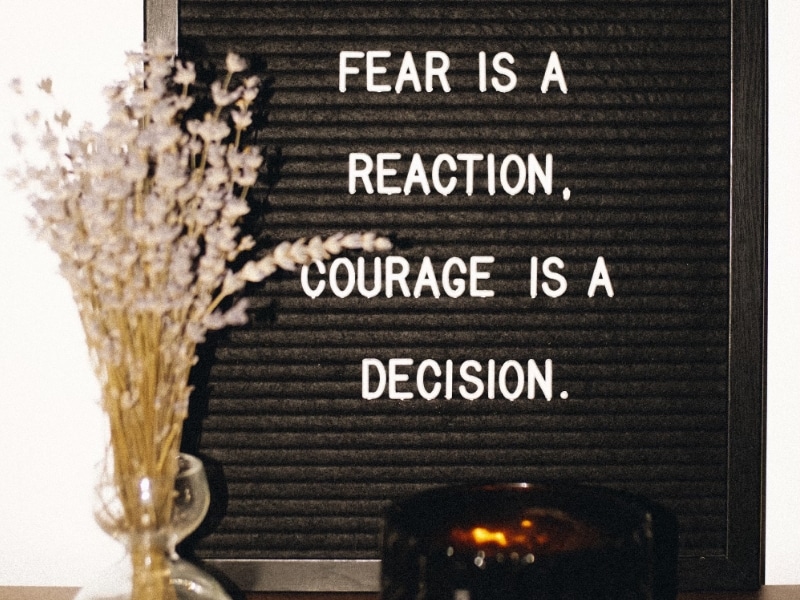Our past experiences shape us. Did you know our brains use our recent experiences to make decisions? This method of decision-making is not always the smartest. It is our brain’s way of being lazy and taking shortcuts.
On the one hand, it is essential to learn from our experiences. On the other hand, if we continually make our decisions based on past experiences, we will shrink. While the availability heuristic encourages fast decision-making, it risks producing harmful consequences. Alarmingly, it can cause us to become too risk-averse.
This article will discuss what we mean by the availability heuristic and how it impacts us. We will also share 5 tips on how you can overcome this bias.
What is the availability heuristic?
The availability heuristic is a cognitive bias introduced in 1973 by Nobel prize-winning psychologists Amos Tversky and Daniel Kahneman.
They suggest that – as human beings – we tend to believe information that more readily comes to mind is most important.
The availability heuristic is the brain’s way of minimizing the effort of fully accessing information regarding decision-making. Instead of evaluating all available data, the brain uses a shortcut. The brain taps into knowledge more readily available. Therefore we base a belief or decision on a recent experience or exposure to information.
While we benefit from a fast decision-making process, we risk the consequences of faulty judgment.
What are examples of availability heuristics?
Have you heard the term “once bitten twice shy”? This saying comes into play with availability heuristics. While it can apply to many things, it is particularly well-fitted for a bad romantic experience, or after you split up with a cheating partner.
If availability heuristics kick in, you will be less likely to continue dating, nor will you be inspired to seek a new partner. You will automatically believe you will experience a similar hurt as you did in the past.
This availability heuristic can stop you from finding happiness!
Some examples of availability heuristics include sensationalized news stories. For instance, reports of shark attacks, plane crashes, and child abductions instigate fear. Incidents of this magnitude are splashed all over the media and can create hysteria. This media coverage leads us to believe these catastrophes are more common than they are.
As a result, we may avoid flying. Perhaps we refuse to swim in the sea. Or, if you are a parent, you may stop your children from going outside to play with their friends.
These examples illustrate how restrictive our lives can be if we entertain the availability heuristic.
Studies on the availability heuristic
A study by Schwarz et al. in 1991 expanded on the original exploration of the availability heuristic. They sought to establish whether the availability heuristic bias showed up more readily as pressure to recall information increased.
Their study split its participants into 2 groups. The first group was required to list 6 assertive behaviors. The second group was required to list 12 assertive behaviors.
Following the task described, participants were asked how they would rate their level of assertiveness on a scale of 1 to 10.
This study examined the number of recollections coupled with the ease of their recall.
The results from the study are fascinating. The participants who were tasked with listing 6 examples of assertive behaviors rated themselves as more assertive than the participants required to list 12 examples of assertive behavior.
Listing 6 assertive behaviors are relatively straightforward, whereas listing 12 is more challenging. The recent experience of this task directly impacted the participant’s belief in their assertion.
How does the availability heuristic affect your mental health?
Think back to the examples of sensationalized news stories and how we react to them. The availability heuristic can lead to risk-averse behaviors.
This encourages us to play small and prevent us from achieving self-actualization. This risk-aversion can hinder our happiness and negatively impact our well-being.
My in-laws read a story about a female who encountered difficulties while running in the local hills. Sadly she passed away. For weeks they tried to prevent me from going on my running adventures—much to my frustration. The media did not mention the thousands of other runners living their best lives in the hills on that fateful day.
The availability heuristic does not just affect the decisions we make for ourselves but how we interact with others. My in-laws meant well, but they adopted the belief that if a female runs in the hills, the chances of something terrible happening are high. There was no telling them otherwise.
The availability heuristic can invite an excess of negative energy from well-meaning people.
- “You shouldn’t do that.”
- “You can’t do this.”
- “That won’t work.”
- “You will hurt yourself.”
It can be stifling. I’m not sure we need any more negative energy in our lives!
5 tips to overcome availability heuristics
The availability heuristic can be a challenging cognitive bias to overcome. It relies on our automatic thoughts based on what we think is evidence. Let’s look at 5 ways we can help overcome the risk of availability heuristics.
1. Promote group brainstorming exercises
In a work environment, we can benefit from group thinking. The beauty of being human is that we all think differently and have our own unique lived experiences.
The power of collective minds can bring about remarkable ideas.
Simply sharing thoughts and engaging in group brainstorming are great ways to induce creativity. This sharing also helps us to escape our tendency to regurgitate our most recent experience or information.
Hearing other people’s ideas helps derail our brain from taking its predictable shortcuts. Sometimes we must debate our bad ideas to serve as the seed for good ideas.
2. Seek input from others
None of us hold all the answers. But sometimes, each of us has a little piece of the jigsaw. We need to communicate openly with others to piece the jigsaw together.
When we seek the opinion of others, we open ourselves up to different thoughts and ideas. This openness is a great way of using all the resources available.
We can significantly improve our decision-making by gleaning information from others. An unexpected side effect of seeking out ideas and input from others is the positive impact of human connection. It also helps us keep an open mind.
When others ask for our input, we feel a sense of importance and self-worth. These feelings can bring about a deeper connection.
3. Avoid snap decisions
It may sound obvious, but if you can delay your decision-making process, then do so.
Of course, some situations require a quick decision to be made. But where possible, avoid making a quick, on-the-spot decision.
This extra time will allow you to consult others, gather further information, and weigh the benefits or disadvantages of the available options.
Telling someone that you will get back to them is perfectly acceptable. Taking yourself off for a walk or a run to mull things over is a great way to gain some space and look at the situation from different perspectives.
4. Utilize decision-making tools
Some decisions are more critical than others. If you have lots of choices to contend with, a specific decision-making tool can be effective.
In the UK, the national decision-making model is a model used in policing. We can adapt it for use in the broader community.
At the center of the decision-making that everything else pivots around is the code of ethics. This code could represent your ethics, morals, or the law. Effective decision-making then goes through several stages:
- Information gathering.
- Assess risk and threat and develop a strategy.
- Consider powers and policy. (This could translate to identifying your skill set or resources)
- Identify options and contingencies.
- Take action and review.
5. Clear your mind
It’s not always easy to make impartial and balanced decisions when our minds are clogged up. If the recent drama of your favorite sitcom is circling your mind, it’s time to declutter.
We should not underestimate the importance of a clear mind for effective decision-making. In fact, a clear mind helps us avoid the availability heuristic.
We can achieve this in several ways.
- Medication and yoga.
- Exercise.
- Good quality sleep.
- Change of scene.
- Music as a distraction.
- Get out in nature.
- Switch off devices.
- Breathing exercises.
Eliminate unnecessary distractions and channel your mind into a sense of calm.
Wrapping up
The availability heuristic is our brain’s way of being lazy. We don’t need to accept what it tells us. We know there are more options out there than our brain presents to us. There are several ways to overcome the availability heuristic, like group brainstorming exercises, avoiding snap decisions, and utilizing decision-making tools.
Do you have any techniques to help you avoid falling into the availability heuristic trap? What’s your favorite tip to overcome the availability heuristic? I’d love to hear from you in the comments below!

